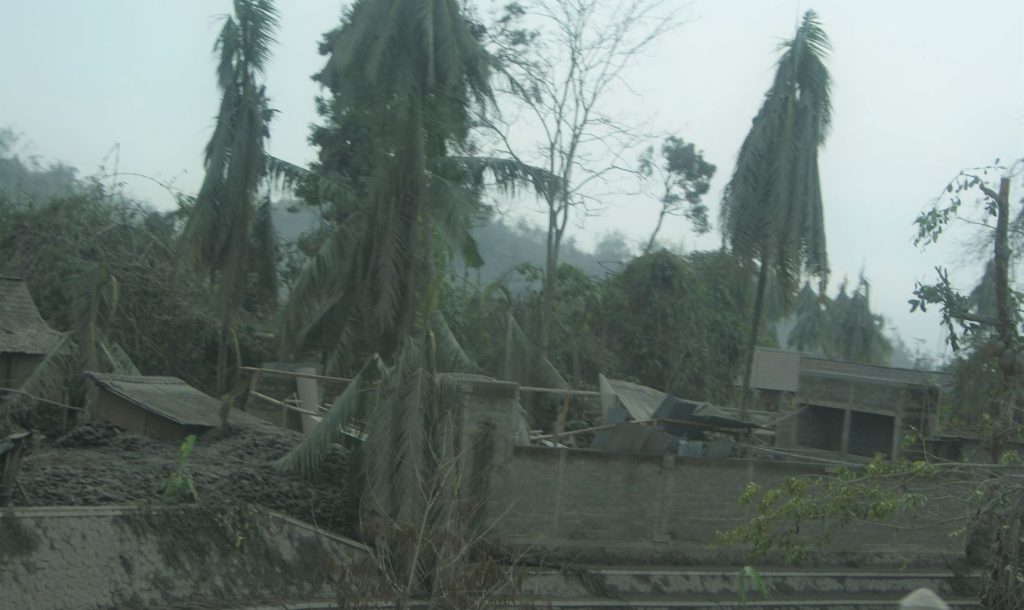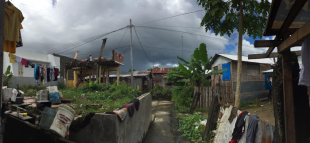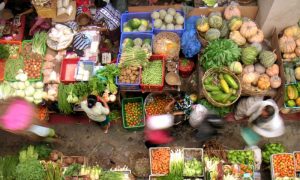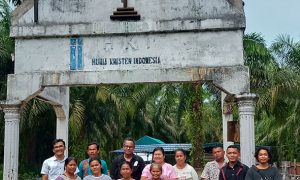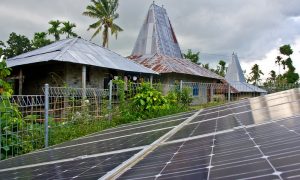More than 70% of the population in Indonesia live within 100km of one or more of the country’s 130 active volcanoes—that’s a staggering 175 million people. 8.6 million Indonesians live within 10km of an active volcano—well within the range of deadly pyroclastic flows.
After volcanic eruptions, communities are often encouraged to “build back better”. But is it possible to build back safer, and if so, how? What steps can be taken post-disaster to develop resilience against future hazards? The concepts of “safer” and “better” are context specific and difficult to quantify in post-disaster reconstruction. These are important questions, but my research indicates there are no simple answers.
The recent eruption of Mount Semeru in December 2021 on the Indonesian island of Java bears striking similarities to the 2010 Mount Merapi eruption. As Indonesia’s most active volcano, Merapi has exhibited more than 70 eruptions since 1548. It is located in one of the most densely populated parts of Java, with over 11,000 people living on the mountain’s slopes. The 2010 eruption displaced 350,000 people, caused 353 deaths and injured 577 people. Almost 4,000 homes were damaged by volcanic material flows. As with Semeru, heavy rain pre- and post-eruption caused lahars that washed ash and rock down into towns and destroyed critical infrastructure.
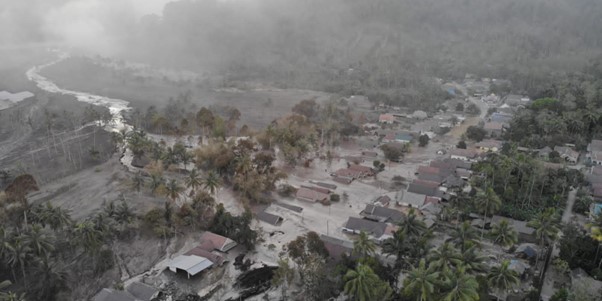
Image 1: Aerial monitoring of the location affected by the hot clouds of avalanches (APG) of Mount Semeru. (Data Management and Information Systems, BNPB Pusdatinkom). Image courtesy the author.
Image 1: Aerial monitoring of the location affected by the hot clouds of avalanches (APG) of Mount Semeru. (Data Management and Information Systems, BNPB Pusdatinkom)
Alarmingly, the gap between global aid availability and demand is increasing, with a projected US$15 billion shortfall in funds required to meet global humanitarian needs. A Centre for Research on the Epidemiology of Disasters study found that more than 116 million homes globally were damaged or destroyed by disasters between 1994 and 2013. Over the following 20 years from 2000 to 2019, global economic losses almost doubled, valued at approximately US$2.97 trillion compared to US$1.63 trillion. On average, people who reside in low-income countries (as compared to high-income countries) are six times more likely to be injured, lose their homes, be displaced, or require emergency assistance after a disaster.
Happy-washing: how a ‘happiness campaign’ hurts disaster survivors
Tacloban's new tourism campaign is a coverup of five years of post-Yolanda devastation.
A key component of mitigating these impacts is an investment in safer and more resilient housing—both before and after disasters.
In 2015, the international community adopted the Sendai Framework for Disaster Risk Reduction in an effort to prevent new, and reduce existing, disaster risk. It lays out clear actions for Member States to protect investments in human development from disasters. But how effective is it?
Build Back Better (BBB) is a mantra central to the Sendai Framework’s post-disaster recovery vision to reduce vulnerability to future disasters and support community resilience to address physical, social, environmental, and economic shocks. Within the context of the damage caused by volcanic eruptions in Indonesia, BBB provides the opportunity to rebuild infrastructure and systems that are stronger, safer, and more disaster resilient. This might include introducing building codes and regulations, establishing and implementing land-use planning laws that limit reconstruction in high-risk locations, or replacing damaged assets with context-sensitive, technologically updated replacements. Recovery, therefore, serves as an opportunity to right-size infrastructure to better fulfil community needs.
Building back better from Merapi
My research considered if, and how, impacted communities have managed to build back better from the 2010 Merapi eruption, with implications for other volcanic eruptions such as Semeru. I focused on Jogoyudan, which is located in Yogyakarta. I evaluated the effectiveness of housing assistance through a household survey to understand housing quality a decade post-eruption. Housing quality was captured through eight dimensions that included access to water supply, sanitation, crowdedness, electricity, structural system roof structure, roof cover and flooring. These factors were selected based on an extensive literature review and merged to create a housing quality score. This score was based on the summation of presence or lack of housing quality dimensions.
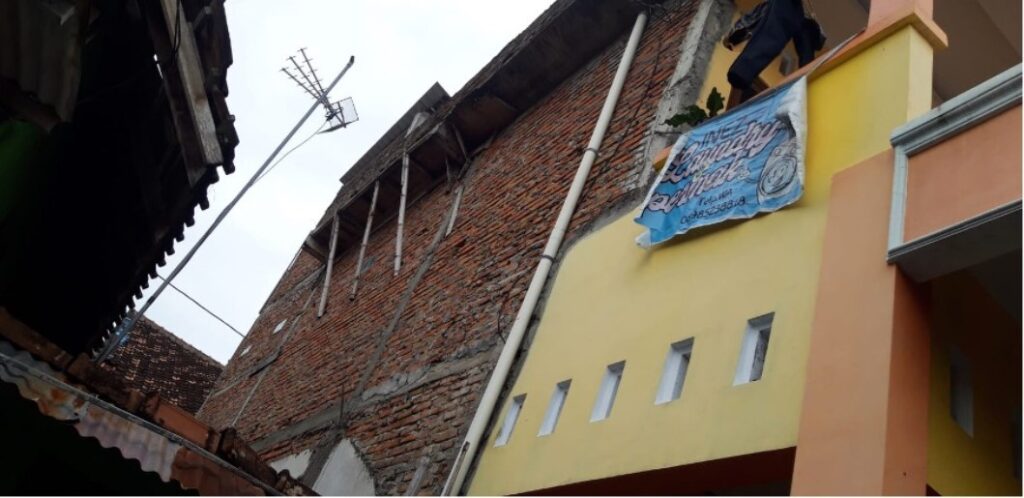
Image 2: Housing expansions that were added in the decade since the 2010 Merapi disaster. (Project team, 2021). Image courtesy the author.
Amongst households impacted by the disaster, assistance was correlated with higher housing quality. I found that 48% of households who received housing assistance reported an increase in quality-of-life post-disaster, with another 31% maintaining their pre-disaster state. When compared to households who did not receive assistance, only 13% reported an increase in quality-of-life, with the majority (72%) reporting no change. When considering that long-term improvements to household living standards should be the underlying priority of any assistance program, this offers a positive outlook of the impact of housing assistance.
Housing assistance was also provided to some lower-income households whose homes were not damaged by lahar flows. The housing quality score of assisted and undamaged households was also higher than the mean score of households whose homes were damaged. This is to say that households who were not impacted by the disaster but received assistance saw improvement in housing quality and sat above the overall community mean. Furthermore, unassisted households who were not impacted by the disaster had the lowest mean housing quality of any group studied. This shows how post-disaster assistance can be a leverage point to address pre-disaster inequalities, suggesting that assistance can equalise pre-existing housing inequalities.
My research revealed that although assistance does result in higher quality, there are more layers to post-disaster recovery. We also observed that some households who self-recovered were able to obtain the same level of housing quality. For example, the presence of construction skills may have offset the absence of assistance.
These results challenge how BBB works in practice. Is the lack of variance in housing quality scores within the surveyed community a sign that damaged homes have been successfully rebuilt to the standard of the rest of the community? Or were lower socio-economic households more damaged by the disaster – thus assistance brought them up to the community standard? If so, achieving housing quality equivalent with the rest of the community may indicate an effective instance of BBB. The lack of a singular methodology to disaster recovery suggests that much more work needs to be done to measure outcomes and understand what “better” outcomes actually look like.
As the gap between aid requirements and availability widens, and as climate change continues to exacerbate the already deleterious effects of disaster among affected communities, it is more important than ever that we understand how to streamline, and make best use of, the BBB process.
This article was made possible through the generous support of the Sydney Southeast Asia Centre through its Residency scheme. The research discussed in this article was funded by Habitat for Humanity International. Special thanks to Jim Kendall, Andreas Hapsoro, and Gregg McDonald. I would like to extend my thanks to my supervisor Dr Aaron Opdyke, for his continued support throughout my research. Further thanks are extended to collaborators including Dr Tantri Handayani from Universitas Gadjah Mada, Dr Yunita Idris from Universitas Syiah Kuala, as well as Habitat for Humanity Indonesia. The views and opinions expressed are those of the author do not necessarily reflect the official policy or position of funding agencies.
 Facebook
Facebook  Twitter
Twitter  Soundcloud
Soundcloud  Youtube
Youtube  Rss
Rss 